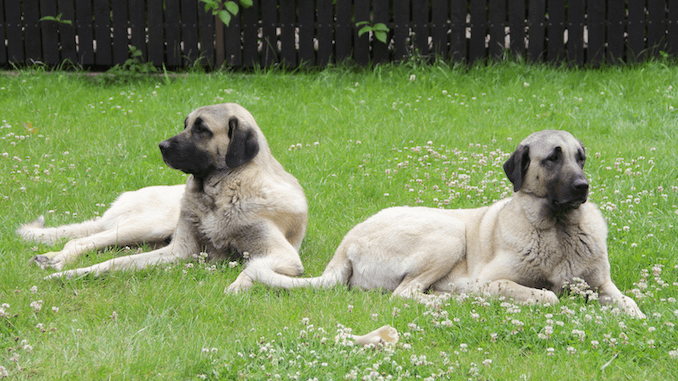
The first time I laid eyes on a Kangal Dog, it was like watching royalty stride through the grass. Their imposing frame and keen, watchful eyes told stories of ancient lands and noble duties. Originating from the rugged landscapes of Turkey, the Kangal isn’t just any dog—it’s a majestic guardian, sculpted by centuries to protect flocks from formidable predators like wolves and bears.
Watching a Kangal Dog is like observing a master at work. Their muscular build and swift movements showcase a breed honed for both power and grace. There’s an undeniable aura of strength and assurance that surrounds them, compelling a deep respect from all who cross their path.
To truly know a Kangal is to understand the essence of loyalty and protection. These dogs aren’t merely pets; they’re stalwart defenders, imbued with a profound sense of duty. Every moment spent with a Kangal reinforces my admiration for their profound character and unwavering spirit.
TABLE OF CONTENTS
Kangal Dog Quick Breed Summary
Origin of the Kangal Dog
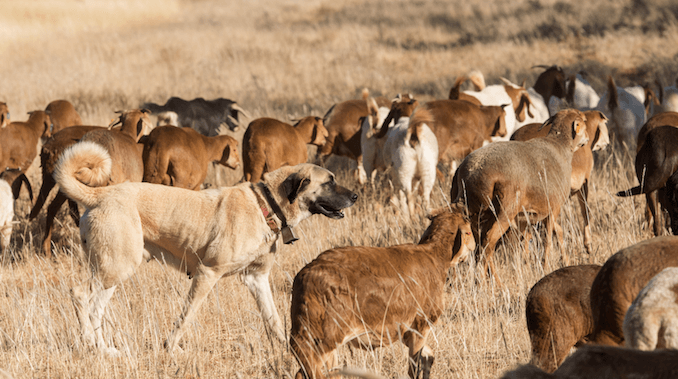
The Kangal Dog, with its impressive stance and protective instincts, carries a legacy that is as fascinating as the breed itself.
The story of the Kangal Dog is steeped in the ancient past of central Turkey, particularly around the Sivas region. Historians believe that the breed has existed since at least the 12th century, if not earlier.
It was bred by local shepherds to protect their sheep and goats from large predators such as wolves and bears. This necessity for a strong, vigilant guardian shaped the breed’s development over centuries, enhancing its physical strength and protective instincts.
The breeding of the Kangal Dog was a meticulous process, designed primarily to enhance its capabilities as a guardian against predators in the harsh terrains of central Turkey. Shepherds in the Sivas region needed a dog that could not only confront threats but also endure the challenging climate and terrain. This selective breeding focused on stamina, strength, and vigilance, ensuring that the Kangal could patrol large areas of land and remain active and alert through long, demanding shifts.
As global interest grew, the breed’s reputation as a formidable guardian led to its spread beyond Turkish borders, adapting to various roles in different cultures while maintaining its core characteristics. This evolution underscores the breed’s adaptability and enduring appeal, evolving not only in function but also in stature within the canine community worldwide.
Physical Appearance of the Kangal Dog
Towering in stature and robust in build, this breed is visually striking, characterized by features that not only contribute to its effectiveness as a guardian but also underline its majestic nature. From the sweeping curves of its strong tail to its dense, practical coat, every element of the Kangal’s appearance has been shaped by both necessity and centuries of selective breeding.
Size and Build
Standing tall, the Kangal Dog is a large breed that commands respect for its height and build. Males typically stand between 30 to 32 inches at the shoulder, while females are slightly smaller, ranging from 28 to 30 inches. Their weight mirrors their robust build, with males weighing anywhere from 110 to 145 pounds and females from 90 to 120 pounds. This size contributes to their imposing presence and enables them to perform the physically demanding tasks required of them.
Coat and Color
The coat of a Kangal Dog is one of its most noticeable features. It’s short and dense, providing the perfect balance of insulation and cooling, which is essential for their original climate in Turkey. The breed’s color is predominantly fawn to light brown, with a distinctive black mask that covers the muzzle and the eyes, enhancing their vigilant expression. Occasionally, you might see slight white markings on the chest and toes, although these are less common.
Other Physical Features
Kangal Dogs are muscular and well-proportioned, with a strong tail that curls slightly upwards, adding to their alert silhouette. Their heads are large and formidable, with ears that drop to the side, framing their face. The eyes are small and dark, conveying a sense of intelligence and keen awareness.
These physical traits are not just for show; every aspect of the Kangal’s build is a testament to their efficiency and effectiveness as protectors. The breed’s overall structure is a perfect blend of power and agility, enabling them to move quickly and with purpose when their protective instincts kick in.
Temperament of the Turkish Kangal Dog
It combines a regal bearing with a complex, compelling temperament that reflects its history as both a protector and a cherished companion. With its deep-rooted instincts and strong emotional bonds, this breed offers a rich behavioral tapestry that’s as rewarding to explore as it is essential to understand.
Protective Instincts
The Kangal Dog’s primary temperament trait is its innate protective nature. These dogs are natural guardians, born with the instinct to safeguard whatever they perceive as their charge. I’ve seen firsthand their vigilant stance—always calm, but always alert, ready to act should the need arise. They are not prone to unnecessary aggression. Rather, they exude a confident deterrence that secures their territory and those within it without conflict.
These dogs possess an acute sense of when protection is truly needed. They evaluate situations with a discerning eye. They react proportionally to the threat, showcasing a restraint that belies their imposing size. This measured approach ensures that they are dependable protectors. As such, they are ideal for families seeking a guardian that is both effective and safe.
Loyalty
The loyalty of a Kangal Dog is a profound force, manifesting as a steadfast dedication to their human family. These dogs bond deeply, showing an unwavering fidelity that endears them to their owners. They are particularly attentive towards children, often adopting a gentle, watchful demeanor around the younger family members.
Their loyalty is quiet but palpable, often expressed through subtle gestures of affection such as a reassuring nuzzle or choosing to stay close by during family activities. This loyalty is not just about companionship; it is a committed guardianship, woven into every aspect of their behavior, ensuring that they are not just pets, but true members of the family.
Adaptability
Kangal Dogs are surprisingly adaptable, capable of thriving in various living conditions as long as they have adequate space to move and a clear role within their pack. This adaptability extends to their ability to cope with different climates and environments. It’s a trait that harks back to their origins in the diverse Turkish landscape. Whether guarding a flock on a chilly plateau or playing in a suburban backyard, they adjust well.
Their flexibility is also evident in their interactions with other animals. Despite their dominant nature, they can coexist peacefully with other pets, particularly if raised together.
How to Care for Kangal Dogs
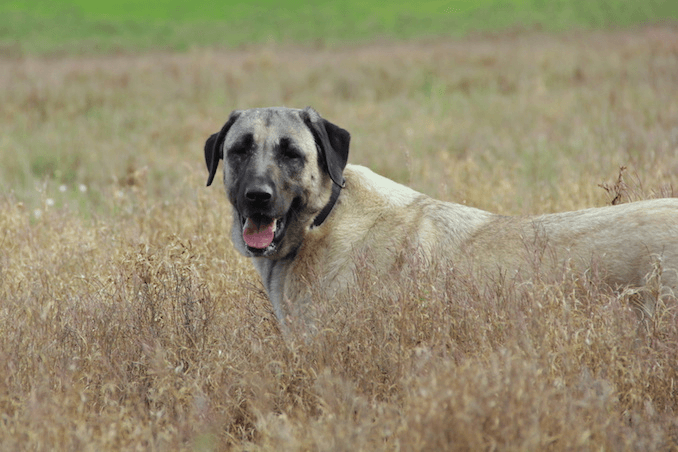
Caring for a Kangal Dog is a deeply rewarding journey that invites you to engage fully with the needs of this noble and robust breed. Known for their size and active disposition, Kangal Dogs demand careful attention to ensure they remain healthy, happy, and ready to protect. It’s a commitment that goes beyond basic care, enveloping a holistic approach to nurturing their physical and mental well-being.
Feeding
Proper nutrition is paramount for maintaining the health and vitality of a Kangal Dog. Here’s how to ensure their dietary needs are met effectively:
- Quality Diet: Select high-quality commercial dog food that adheres to AAFCO standards, specifically formulated for large breeds with high energy demands.
- Protein-Rich Foods: Incorporate a variety of lean meats such as chicken, beef, and fish to provide essential proteins that support muscle health and sustain energy levels.
- Meal Schedule: Adult Kangals should eat twice a day—morning and evening—to regulate their energy and manage their substantial intake without overburdening their digestive system.
- Caloric Intake Management: Monitor their food portions to prevent obesity, a common issue in less active or older Kangals, by adjusting their food intake according to their activity level. For puppies, aim for 3,000 to 4,800 calories. On the other hand, adults must have 2,100 to 3,500 calories.
Kangals do best with a diet that includes both premium commercial foods and fresh, natural ingredients. This not only keeps them in peak physical condition but also caters to their palate, keeping mealtime both nutritious and enjoyable.
Grooming
Kangal Dogs, despite their short coats, require regular grooming to maintain their overall health and appearance:
- Brushing: Weekly brushing is essential not only for removing loose fur but also for distributing skin oils throughout their coat, keeping it healthy and lustrous.
- Bathing: Bathe your Kangal only when necessary, about every few months, to maintain the natural oils that protect their skin and coat.
- Nail Clipping: Regular nail trimming is crucial to avoid overgrowth that can lead to pain or mobility issues, particularly important in such a large, active breed.
- Ear and Teeth Cleaning: Maintain a routine of checking and cleaning their ears weekly to prevent infections, and brush their teeth regularly to avoid dental issues.
Regular grooming sessions are not just about cleanliness. They’re an opportunity to strengthen your bond with your Kangal and ensure they’re comfortable and healthy.
Exercise
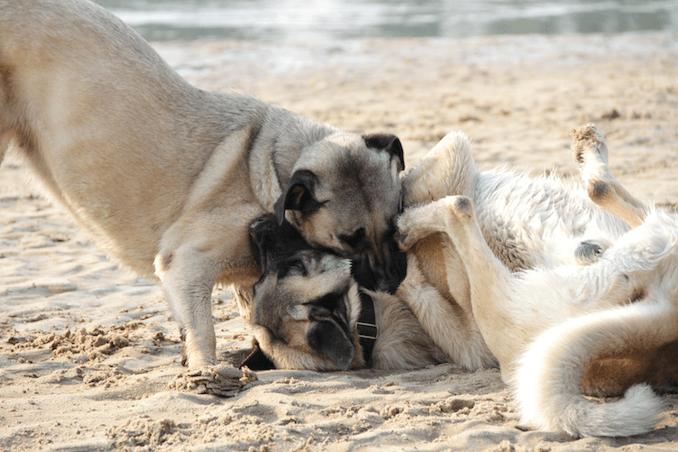
Adequate exercise is critical for a breed as robust and energetic as the Kangal:
- Daily Physical Activity: Aim for at least one to two hours of exercise per day through walks, runs, or playtime in a secure environment.
- Mental Stimulation: Engage them with training sessions, puzzle toys, or agility work to keep their mind sharp and focused.
- Adequate Space: Provide a large, securely fenced yard or area where they can roam freely and safely express their natural behaviors.
Training a Kangal Dog
With their blend of intelligence, protectiveness, and independent spirit, these dogs require a thoughtful approach to training that emphasizes mutual respect and clear communication.
Start Early
Begin training your Kangal puppy as soon as you bring them home. Early socialization and puppy training classes are crucial for integrating them into your family and society. Introduce them to various people, environments, and situations to help them develop into well-adjusted adults. It’s fascinating to watch these puppies learn and adapt; their curious nature makes them eager to explore the world under your guidance.
Use Positive Reinforcement
Kangal Dogs respond exceptionally well to positive reinforcement techniques. Rewards-based training, using treats, praise, or toys, encourages them to repeat desired behaviors. This method not only fosters a bond of trust between you and your Kangal but also makes the training process enjoyable for both. Remember, harsh or punitive methods can lead to resistance and could damage the trust you’re building.
Establish Leadership
Kangals are naturally dominant dogs, so it’s important to establish yourself as the alpha in the relationship. Consistent leadership helps prevent behavioral issues associated with dominance and ensures that your Kangal respects your commands. This doesn’t mean being harsh; rather, it’s about being firm and consistent with rules and boundaries. Maintaining this leadership through various training exercises and daily interactions helps create a stable and respectful relationship.
Focus on Obedience Training
Obedience training is crucial for managing a breed as powerful and protective as the Kangal. Basic commands like sit, stay, come, and heel are essential. Training your Kangal to respond to these commands not only ensures their safety but also the safety of others around them. Obedience classes can be particularly beneficial, providing structured learning environments and opportunities for further socialization.
Be Patient and Consistent
Patience and consistency are key when training a Kangal Dog. Due to their intelligent and sometimes stubborn nature, Kangals may test boundaries and require more repetition to master commands. Stick with your training regimen, and don’t get discouraged by setbacks. Consistent reinforcement of rules and commands reinforces learning and ensures your Kangal understands what is expected of them.
Common Health Problems in Kangal Dogs
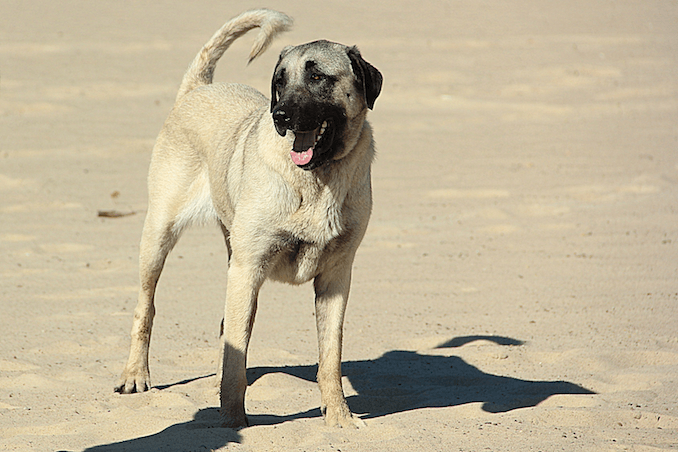
Kangal Dogs are known for their strength and resilience, but they do face some breed-specific health challenges. Awareness and proactive management of these issues can significantly improve your dog’s quality of life.
Hip Dysplasia
A prevalent issue in large breeds, hip dysplasia occurs when the hip joint is malformed, which can lead to arthritis and discomfort. Signs of this condition include a noticeable limp, difficulty in standing up or lying down, and a reluctance to engage in usual activities like running or jumping. The pain associated with hip dysplasia can greatly affect a Kangal’s mobility and quality of life.
- Weight Management: Keeping your dog at an optimal weight helps alleviate pressure on the hips.
- Regular Exercise: Engage in low-impact exercises that strengthen the muscles without straining the joints.
- Dietary Supplements: Add supplements such as glucosamine and chondroitin to your dog’s diet, under veterinary advice.
- Regular Vet Visits: Early detection and management through routine veterinary check-ups can mitigate the effects of this condition.
Gastric Torsion (Bloat)
Gastric torsion, also known as bloat, is a dire medical emergency where the stomach distends with gas and twists on itself. Symptoms are acute and can include a distended abdomen, restlessness, excessive drooling, and unsuccessful attempts to vomit. This condition requires immediate veterinary intervention as it can be fatal within a few hours if not treated.
- Smaller, More Frequent Meals: Feed two to three smaller meals a day instead of one large one.
- Calm Environment Around Meals: Keep your dog calm before and after eating to facilitate digestion.
- Elevated Feeders: Consider using elevated feeding stations to help reduce the intake of air.
- Awareness of Symptoms: Know the signs of bloat and be prepared to act quickly if they occur.
Entropion
Entropion is a condition involving the rolling in of the eyelids, which causes the eyelashes to irritate the surface of the eye. This can lead to pain, corneal ulcers, or infections. Common signs include squinting, rubbing at the eyes, and excessive tearing. This discomfort can significantly impact the dog’s ability to see clearly and comfortably.
- Regular Eye Examinations: Ensure your Kangal receives frequent eye health checks.
- Consider Surgical Intervention: Surgery might be necessary to correct the eyelid position permanently.
- Maintain Eye Cleanliness: Regular cleaning can help prevent additional irritants that could exacerbate the condition.
Hypothyroidism
This thyroid gland deficiency leads to reduced hormone production, affecting various bodily functions. In Kangals, it may manifest as unexplained weight gain, lethargy, susceptibility to skin diseases, and intolerance to cold. Managing hypothyroidism effectively is crucial as it influences not just the physical but also the mental well-being of the dog.
- Regular Blood Tests: Monitor thyroid levels through blood tests to catch any changes early.
- Hormonal Supplements: Administer synthetic hormones as prescribed by your vet to maintain hormone balance.
- Lifestyle Adjustments: Adapt your Kangal’s diet and exercise routines to support overall health and manage symptoms.
FAQs: A Deeper Dive into Kangal Dogs
What is the typical lifespan of a Kangal Dog?
Kangal Dogs are known for their longevity, typically living between 12 to 15 years. Proper care, including regular veterinary check-ups, a balanced diet, and consistent exercise, can help maximize their lifespan. This breed tends to stay healthier longer when they are well-cared for and receive early intervention for potential health issues.
Are Kangal Dogs good with kids?
Kangal Dogs can be wonderful pets for children, particularly when raised with them from puppyhood. They are protective and can be gentle giants with proper training and socialization. However, due to their large size, supervision is recommended around young children to ensure play remains safe and controlled.
How do Kangal Dogs get along with other pets?
With early socialization, Kangal Dogs can coexist peacefully with other pets, including dogs. Their herding instincts may prompt them to be dominant, so introductions should be gradual and under controlled conditions. They might be better in homes with larger dogs rather than smaller pets, which could trigger their prey drive.
How much do Kangal Dogs shed?
Kangal Dogs have a short to medium-length coat that sheds moderately. Expect seasonal shedding twice a year, which can be managed with regular brushing. During shedding seasons, more frequent grooming can help keep loose hair under control and maintain the coat’s health.
Do Kangal Dogs bark a lot?
Kangal Dogs are not excessive barkers, but they will bark when necessary to alert you to the presence of strangers or to express their needs. Their bark is typically reserved for specific situations, such as perceived threats or important notifications to their owners. Training can help manage their barking behavior effectively.
So, Is the Kangal Dog Right for You?
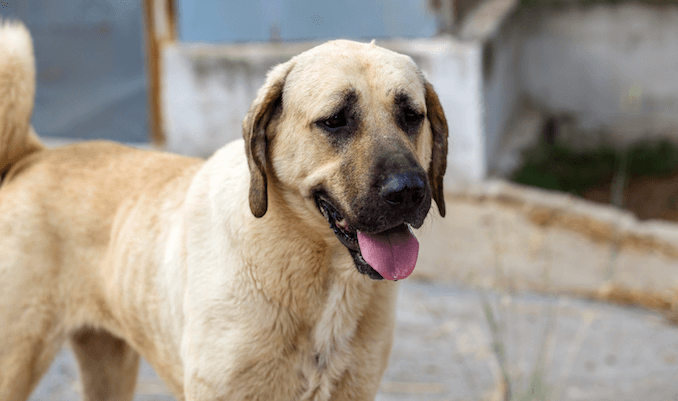
Kangal Is For
- Active Individuals or Families: If you love to spend time outdoors and are looking for a companion to join in on the adventure, a Kangal might be perfect. They thrive in active households that can provide plenty of exercise and engagement.
- Experienced Dog Owners: Ideal for those who have experience with large or dominant breeds. Owners who can offer firm, consistent training and understand canine behavior will get along best with a Kangal.
- Those With Space: Kangals do best in homes with large, securely fenced yards where they can roam and patrol. They are not suited to apartment living due to their size and energy levels.
- People Looking for a Loyal Guardian: If you’re seeking a protective dog that will watch over your family and property, the Kangal’s natural guarding instincts make them an excellent choice.
Kangal Is NOT For
- First-time Dog Owners: The size and strength of a Kangal can be challenging for someone who has never trained or handled dogs before. They require an owner with a strong understanding of dog behavior.
- Families with Small Pets: While they can be socialized to get along with other dogs, their prey drive might make them unsuitable for homes with smaller pets, such as cats or rabbits.
- Those Seeking a Low-Maintenance Pet: Kangals require regular exercise, grooming, and health checks to maintain their well-being. They are not a ‘set and forget’ type of pet.
- People Looking for a Quiet, Submissive Dog: Kangals are known for their independence and protective nature. They can be vocal when they feel it’s necessary and are not typically submissive.

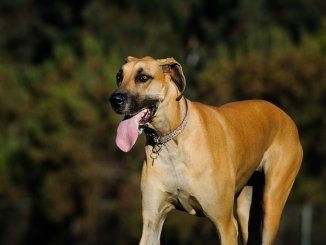
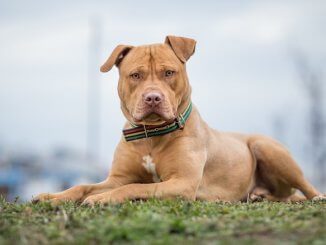

The only “role” my little girl (117 lb.) has played is to be my bundle of pure love, dedication and protection. She is a 100% pure Kangal, with a registered sire (imported from Turkey) and a dame that traces her lineage back 5 generations.
If I had previously known about this breed before, I would have had owned a Kangal long before; fantastic companions and family members!!!
When I lived in Tabriz, Iran we had a Kangal as one of our guard dogs (the other two were Caucasian Sheepdogs). Aslan, our Kangal was intelligent, loyal, and fiercely protective. I would definitely consider welcoming another into my life as a guardian for my farm.
I have 10 acres. This dog came to us as a stray pup. Took a little coaxing for him to trust us, but once he did he was totally ours. Gentle & kind – this breed is superb!!
We adopted our Kangal (maybe a Kangal-Kuchi mix) from someone who brought it to our farm. He is very loving and playful, but I am having trouble training him to stop play biting. He also has strong resource guarding instincts. I wanted to know if anybody else has experienced these traits and how they have gone about training them.
We rescued a two year old male in Montenegro recently. (Obviously no papers, but a pretty distinctive breed). He’s friendly, gentle, calm, very loving, non-aggressive to other animals on walks (unless aggressively approached by them), and LOVES meeting and greeting women. He slips out his harness if he can and runs at SPEED! So far, pretty trainable, but stubborn and independent. Smart, sweet and since we don’t have a fenced garden, stays inside with great house manners. He’s adorable.
Hi Yvonne. It’s great to know your Kangal has been trained so well. Do you have any tips to share? And, did your dog have resource guarding (especially with bones) instincts and play biting problems?
While stationed in Turkey I had a Kangal. She was one of the sweetest and smartest dogs I’ve known. I was heart broken when I wasn’t allowed to bring her back. Thankfully I found her a good home with one of my Turkish friends. She was three when I left so she had just started guarding the home. So for three years we played.
I have english mastiffs, and siberian huskies which resembles a wolf and I really want a kangal. Does anyone with this breed know if I can raise a kangal with them?
Yes Kangal!
Mine is mixed and is an excellent personal guardian and lover of children. She excels at staying very close to me and being incredibly alert of our environment, using her keen sight and hearing equally well she also is adept at reading me and discerning of I am in need of assistance, myself. This is such a multitalented guardian. I am so impressed. Her flaw may not be from her breed but rather some scary experiences as a pup. She is highly animal reactive.
Everyone from Sivas/Turkey take a bit of pride in the Sivas Kangal breed. I guess I am no exception. My uncles who had cattle farms used to have several of them at any tıme. Sivas Kangal is the only breed in Turkey which can put up a fight against wolves successfully when the wolves occasionally attack the farm animals. Sivas Kangals are super reliable for the protection of a farm or a house, but they are also great companion. Apart from their strength and large size, they are known to be super smart and very caring. I really look forward to having one when I retire.
BTW I am quite puzzled that you referred to Kangal as a “Kurdish dog” twice above. Is it a typo? I have never heard that Kangal dogs would be labeled as Kurdish dogs as a middle age Turkish man in my life regardless of having family roots in Sivas.
I have a female 2 and a half years now pregnant in Cyprus.She is superb guardian I think from 20months old. she is very friendly with children at walks but barking very much at home when a cat pass by etc.. what astonished me the most was one time I had budgies in her cage, and the one escaped. She caught it with her mouth carefully not to harm it and she put it inside her drinking water for the bird to get wet and not be able to fly until I come and take it and put it back in the cage. That astonished me how intelligent she is on herding. Also when we walk in the mountain and I need to climb somewhere she climbs 1st and waits for me to grab her and pull my self up
Our baby is a rescue. We were originally told that she was a Great Pyr mix. As she grew and developed it became apparent that she is 99% if not pure Kangal. She meets all the standards physically, mentally, behavior and in temperament. Her only trait that isn’t in the standard is a small amount of white around her muzzle in the black mask. We got her as a companion for my wife for when I was away. She is extremely protective of her and me and totally accepting of our family members. She immediately sensed that my father in law was older (85 when they met) and is so gentle around him as well as our grand children. I tell my wife that I feel more comfortable with our little Tia (125 lbs and about 32″ at the withers) at home with her when I go hunting. She guards the house at night and will patrol to make sure everything is as it should be. She is an amazing dog we love her and she is part of the family.